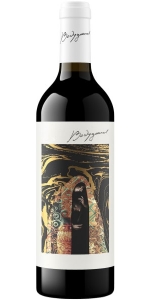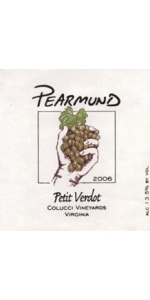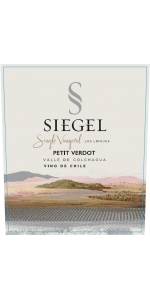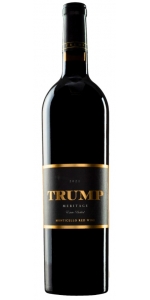Petit Verdot
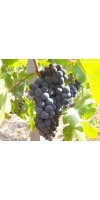
Petit Verdot is a variety of thick-skinned red wine grape that is primarily grown in the Bordeaux region, but has recently attracted wine makers from California, Australia, Washington State, and New Zealand. It ripens later than other varieties in the region, often; too late which is why it fell out of favor in Bordeaux. Upon ripening, Petit Verdot is added in small amounts to add tannin, color, and flavor. When grown in the New World, it tends to ripen more reliably and has been made into single varietal wines. When blended with Cabernet Sauvignon, it stiffens the mid palate. When young, Petit Verdot has banana and pencil shaving aromas with strong tones of violet and leather as it matures and develops. The mouth-gripping tannins are so powerful that they can often leave the palate with a strong puckering sensation. The aroma is equally strong encompassing leather, earth, and cigar box and smoke tones. On the palette, the taste is peppery with notes of spice, smoke, and minerals. Because of the high tannin levels, the wine requires long oak aging. This softens the final fruit sensation in Petit Verdot. Because of the levels of tannin in Petit Verdot, it has the potential to age for decades.
DAOU Vineyards Bodyguard Red is made from 65% Petit Verdot, 35% Petite Sirah.
The 2020 Bodyguard is the newest edition to this exceptional collection from winemaker Daniel Daou. Bold and brooding, it displays a vivid, deep purple hue accompanied by an intense nose of chocolate-covered blueberry, black raspberry, Zante currant, pencil lead and damp forest floor. Secondary layers reveal notes of kirsch, fennel, black olive and a hint of cool wintergreen. A lush palate of black plum, dried cherry and blackberry is supported by a firm structure with polished fine-grained tannins. Highlights of dusty leather, dried sage and truffle add layers of complexity that complement the rich, dark fruit. The finish strikes an impressive balance of power and grace, with lingering notes of currant, dark chocolate and crushed stone minerality that enhance the fullness of the experience.
Review:
Gimenez Mendez Alta Reserva Petit Verdot is made from 100% Petit Verdot.
The wine comes from Las Brujas vineyard located 35 km from the Río de la Plata. The breezes of the Atlantic Ocean refresh the vines permanently thanks to the flat topography of the South of Uruguay.
Intense purple in color, Alta Reserva Petit Verdot offers aromas of dried fruits, ripe plums, spicy notes of white pepper and vanilla. In the mouth it is powerful and refined, with elegant and firm tannins. It is a wine with great personality and expression of the Uruguayan climate and terroir.
Pairing:
Meat: Lamb stew, Lamb Chops, Lamb Kabobs, Roasted Pork, Barbecue Beef Short Ribs, Ground Beef Burgers, Iranian Beryooni, Mexican Adobo, Beef with Mole, Chinese Barbecue Pork
Vegetable: Portabello Mushroom, Black Lentils, Truffle, Black Beans, Kidney Beans, Hazelnut, Black Olives, Eggplant,
Pearmund Cellars Petit Verdot is made from 100 percent Petit Verdot.
Blackberry aromas with rich plum flavors. Well-rounded tannins and a smooth finish. Earthy, rustic, and warm. Limited production.
Siegel Single Vineyard Los Lingues Petit Verdot is made from 100 percent Petit Verdot.
The grapes were grown on the Los Linques "Reserve" hillside, blocks 23, 24 & 25. The wine offers elegant notes of tobacco, mocha and roasted coffee beans. It presents soft tannins, wine of great balance with a persistent and long finish.
Pairs with red meat, particularly lamb.
Harmonious Bordeaux-style blend with bold red fruit aromas of black cherry, currant, and blackberries. Balanced with subtle notes of cocoa and spice. Enjoy with soft cheeses, such as brie or goat. Terrific with lamb, aged beef, rustic stews, and mushrooms.
- back
Selected Options
Grape Types
Categories
Pricing
Countries
Regions
Grape Types
Wineries
Organic/Free Shipping
Dominique Piron Morgon Cote du Py is made from 100 percent Gamay.
The Morgon Cru is based in the heart of Northern Beaujolais. Côte du Py is the heart of Morgon, a little hill of very old blue stone rocks - the oldest soils of Beaujolais (around 430 millions years old), with a typical blue color.
Côte du Py has been known for centuries for being the best terroir of the village, producing long lived wines with strong structure and flavors.
Wines of the Côte du Py are very dark, profound and dense. Classic aromas of red berries, cherry, kirsh. Fruity, structured and mineral in the mouth with graphite flavors and spicy notes of black and white pepper. Wine can age up to 10 years.
Hand picked grapes are sorted manually and destemmed for 50 to 70%. Fermentation starts in concrete tanks and lasts for 18-25 days with remontages and pigeages. Then after pressurage starts the aging, for 2/3 in concrete tanks, and 1/3 in recent French oak barrels with batonages on fine lies only. After 10 month we do the blending, keeping only the best cuvees and best barrels, and do the bottling.
Pairs well with red meat like beef, duck and game (Hare, Dear, Wild Pork,…), cheses.

